
Native Americans, sometimes called American Indians, First Americans, or Indigenous Americans, are the Indigenous peoples of the United States or portions thereof, such as American Indians from the contiguous United States and Alaska Natives. The United States Census Bureau defines Native American as "all people indigenous to the United States and its territories, including Native Hawaiian and Other Pacific Islanders, whose data are published separately from American Indians and Alaska Natives". The U.S. census tracks data from American Indians and Alaska Native separately from Native Hawaiian and Other Pacific Islanders, who include Samoan Americans and Chamorros.

The Indian Removal Act of 1830 was signed into law on May 28, 1830, by United States President Andrew Jackson. The law, as described by Congress, provided "for an exchange of lands with the Native Americans residing in any of the states or territories, and for their removal west of the river Mississippi." During the presidency of Jackson (1829–1837) and his successor Martin Van Buren (1837–1841) more than 60,000 Native Americans from at least 18 tribes were forced to move west of the Mississippi River where they were allocated new lands as part of an ethnic cleansing or genocide. The southern tribes were resettled mostly in Indian Territory (Oklahoma). The northern tribes were resettled initially in Kansas. With a few exceptions, the United States east of the Mississippi and south of the Great Lakes was emptied of its Native American population. The movement westward of indigenous tribes was characterized by a large number of deaths occasioned by the hardships of the journey.
Cultural appropriation is the inappropriate or unacknowledged adoption of an element or elements of one culture or identity by members of another culture or identity. This can be especially controversial when members of a dominant culture appropriate from minority cultures. According to critics of the practice, cultural appropriation differs from acculturation, assimilation, or equal cultural exchange in that this appropriation is a form of colonialism. When cultural elements are copied from a minority culture by members of a dominant culture, and these elements are used outside of their original cultural context – sometimes even against the expressly stated wishes of members of the originating culture – the practice is often received negatively.
The Native American name controversy is an ongoing discussion about the changing terminology used by the Indigenous peoples of the Americas to describe themselves, as well as how they prefer to be referred to by others. Preferred terms vary primarily by region and age. As Indigenous peoples and communities are diverse, there is no consensus on naming. Historically, until late in the 20th century, most Indigenous people in the Americas were collectively called "Indians". The distinct people in the Arctic were called "Eskimos". Both terms, especially Eskimo, have declined in usage in formal speech.
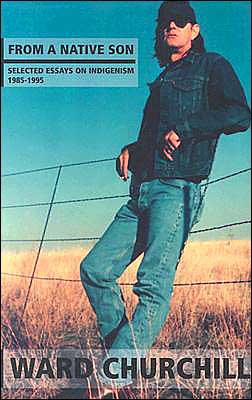
From a Native Son: Selected Essays on Indigenism, 1985–1995 is a 1996 book by Ward Churchill. It is a collection of 23 previously published essays on various topics relevant to the indigenous peoples of the Americas in relation to their experience of being colonized. It is introduced by Howard Zinn.

Stereotypes of Indigenous peoples of Canada and the United States of America include many ethnic stereotypes found worldwide which include historical misrepresentations and the oversimplification of hundreds of Indigenous cultures. Negative stereotypes are associated with prejudice and discrimination that continue to affect the lives of Indigenous peoples.
Cherokee heritage groups are associations, societies and other organizations located primarily in the United States. Such groups consist of persons who do not qualify for enrollment in any of the three federally recognized Cherokee tribes. As the Cherokee Nation enrolls all people who can prove descent from a Cherokee ancestor, many of these groups consist of those who claim Cherokee ancestry but have no documentation to prove this alleged heritage. Some have had their claims of ancestry checked and proven to be false. A total of 819,105 Americans claimed Cherokee heritage in the 2010 Census, more than any other named tribe in the Census.
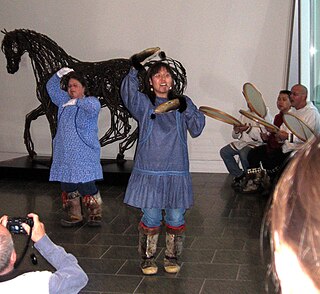
Native American identity in the United States is a community identity, determined by the tribal nation the individual or group belongs to. While it is common for non-Natives to consider it a racial or ethnic identity, for Native Americans in the United States it is considered to be a political identity, based on citizenship and immediate family relationships. As culture can vary widely between the 574 extant federally recognized tribes in the United States, the idea of a single unified "Native American" racial identity is a European construct that does not have an equivalent in tribal thought.

Indigenous peoples of California, commonly known as Indigenous Californians or Native Californians, are a diverse group of nations and peoples that are indigenous to the geographic area within the current boundaries of California before and after European colonization. There are currently 109 federally recognized tribes in the state and over forty self-identified tribes or tribal bands that have applied for federal recognition. California has the second-largest Native American population in the United States.

Playing Indian is a 1998 nonfiction book by Philip J. Deloria, which explores the history of the conflicted relationship white America has with Native American peoples. It explores the common historical and contemporary societal pattern of non-Natives simultaneously mimicking stereotypical ideas and imagery of "Indians" and "Indianness", in a quest for National identity in particular, while also denigrating, dismissing, and making invisible real, contemporary Indian people.
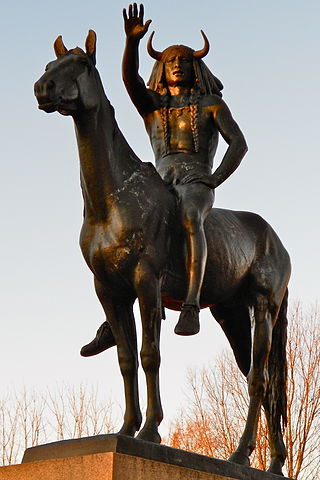
The Medicine Man is an 1899 bronze equestrian statue by Cyrus Edwin Dallin located on Dauphin Street, west of 33rd Street, in Fairmount Park in Philadelphia. The statue portrays an indigenous American medicine man.
The genocide of Indigenous peoples, colonial genocide, or settler genocide is the intentional elimination of Indigenous peoples as a part of the process of colonialism.
Native American feminism or Native feminism is, at its root, understanding how gender plays an important role in indigenous communities both historically and in modern-day. As well, Native American feminism deconstructs the racial and broader stereotypes of indigenous peoples, gender, sexuality, while also focusing on decolonization and breaking down the patriarchy and pro-capitalist ideology. As a branch of the broader Indigenous feminism, it similarly prioritizes decolonization, indigenous sovereignty, and the empowerment of indigenous women and girls in the context of Native American and First Nations cultural values and priorities, rather than white, mainstream ones. A central and urgent issue for Native feminists is the Missing and murdered Indigenous women crisis.
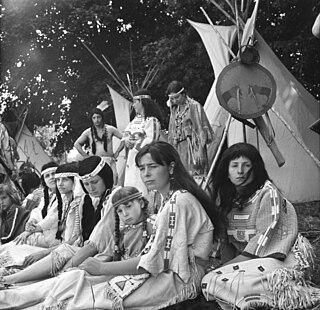
Native Americans in German popular culture have, since the 18th century, been a topic of fascination, with imaginary Native Americans influencing German ideas and attitudes towards environmentalism, literature, art, historical reenactment, and German theatrical and film depictions of Indigenous Americans. Hartmut Lutz coined the term Indianthusiasm for this phenomenon.
The Indian princess is usually a stereotypical and inaccurate representation of a Native American or other Indigenous woman of the Americas. The term "princess" was often mistakenly applied to the daughters of tribal chiefs or other community leaders by early American colonists who mistakenly believed that Indigenous people shared the European system of royalty. This inaccurate portrayal has continued in popular animation, with characters that conform to European standards of beauty, with the most famous misrepresentation being that of Pocahontas. Frequently, the "Indian Princess" stereotype is paired with the "Pocahontas theme" in which the princess "offers herself to a captive Christian knight, a prisoner of her father, and after rescuing him, she is converted to Christianity and lives with him in his native land." - a false narrative that did not even happen quite that way to the real child who inspired the Pocahontas stories. The phrase "Indian princess", when used in this way, is often considered to be a derogatory term, a type of racial slur, and is deemed offensive by Native Americans.

The California genocide was a series of systematized killings of thousands of Indigenous peoples of California by United States government agents and private citizens in the 19th century. It began following the American Conquest of California from Mexico, and the influx of settlers due to the California Gold Rush, which accelerated the decline of the Indigenous population of California. Between 1846 and 1873, it is estimated that non-Natives killed between 9,492 and 16,094 California Natives. Hundreds to thousands were additionally starved or worked to death. Acts of enslavement, kidnapping, rape, child separation and forced displacement were widespread. These acts were encouraged, tolerated, and carried out by state authorities and militias.
Gregg Deal is an artist and activist whose work deals with "Indigenous identity and pop culture, touching on issues of race relations, historical consideration and stereotype"

The Chicago Blackhawks name and logo controversy refers to the controversy surrounding the name and logo of the Chicago Blackhawks, a National Hockey League (NHL) ice hockey team based in Chicago, Illinois. The use of terms and images referring to Native Americans/First Nations as the name or mascot for a sports team without permissions from or consultations with local Indigenous communities, is a topic of public controversy in the United States and Canada. Since the 1960s, as part of the indigenous civil rights movements, there have been a number of protests and other actions by Native Americans and their supporters targeting the more prominent use of such names and images by professional franchises such as the Cleveland Guardians formerly known as the "Indians" of Major League Baseball (MLB) that was officially discontinued in 2016; the Washington Commanders formerly known as the "Redskins" of the National Football League (NFL), the NFL's Kansas City Chiefs and MLB's Atlanta Braves, the latter two attracting criticism of "the tomahawk chop" often performed by their fans. Like other teams with tribal mascots, there are calls from Indigenous activists and organizations to change the Blackhawks' name and logo and eliminate tribal mascots and imagery throughout sports. In contrast to generic names used by other teams, Blackhawks refers to a World War I-era U.S. Army division which was named for prominent Illinois-based Native American chief Black Hawk.
Pretendian is a pejorative colloquialism used to call out a person who has falsely claimed Indigenous identity by professing to be a citizen of a Native American or Indigenous Canadian tribal nation, or to be descended from Native American or Indigenous Canadian ancestors. As a practice, being a pretendian is considered an extreme form of cultural appropriation, especially if that individual then asserts that they can represent, and speak for, communities from which they do not originate. It is sometimes also referred to as a form of fraud, ethnic fraud or race shifting.
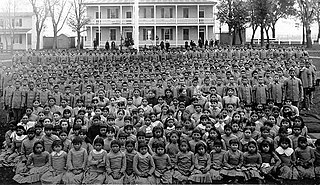
Both during and after the colonial era in American history, white settlers engaged in prolonged conflicts with Native Americans in the United States, seeking to displace them and seize their lands, resulting in Native American enslavement and forced assimilation into settler culture. The 19th century witnessed a surge in efforts to forcibly remove certain Native American nations, while those who remained faced systemic racism at the hands of the federal government. Ideologies like Manifest destiny justified the violent expansion westward, leading to the passage of the Indian Removal Act of 1830 and armed clashes.












